Is Blood Flow Restriction (BFR) Effective?
For anyone who has heard about Blood Flow Restriction training, you may be wondering if it really works. You may be skeptical. Even if it does work, what does it work on? What do you use it for? How is it effective? Well, I have previously written about how it works and safety with regards to BFR training, but I have not yet addressed how it's effective.
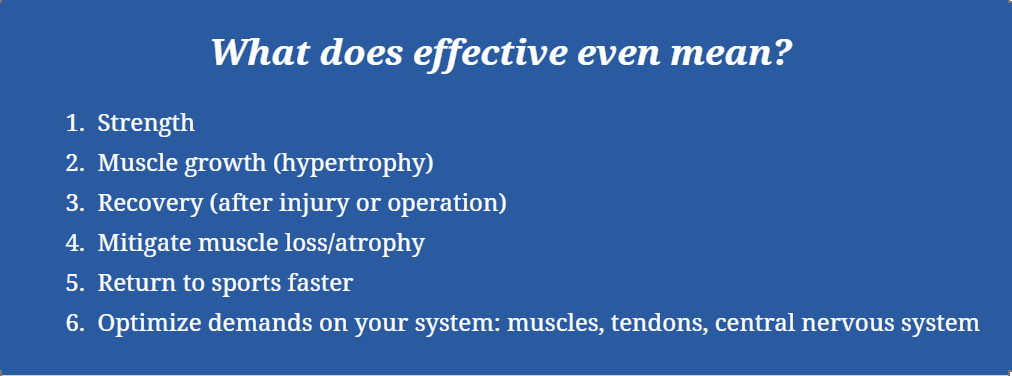
The basic premise of blood flow restriction is THE EXACT SAME as that of the body's response to exercise.
- The goal is to stimulate protein synthesis (with the release of insulin-like growth factor (IGF)) to help strengthen muscles
- Increase the release of human growth hormone (HGH) to promote collagen growth for muscle, tendon, bone, ligament (all made up of collagen) in order to improve tissue healing/recovery/mobility
- To complete these activities while providing a demand on all of the body's systems that allows for building up, not breaking down
- The key is to not over-stress the involved structures or systems.
We know this is not always possible with our activities - like strength training. While the increased stresses from exercise can promote all of the positive elements I just listed, it can also lead to injury. Beyond that, if you are already injured, you cannot train at the levels needed to stimulate the growth/strength/endurance/performance mentioned.
Why is all of this important?
Let’s start with the understanding that blood flow restriction training is utilized while completing exercises at only 30% (or so) of your one rep max (RM). With that light of a load, very little to no muscle damage is going to occur. You may be wondering with that light of a load, how can it be effective? How can you build strength, build size or return to your prior levels of activity? The answer to these questions is to think of muscle utilization as a balance of use and recovery.
Most make the mistake of just working the muscles and not allowing recovery OR not working the muscles enough to effect change. For years, research has shown the positive effects of higher intensity exercises (i.e. working the muscles hard). We know Growth Hormone (which facilitates healing) is released with higher levels of resistance training. But, if you are unable to complete training at higher levels, you cannot make the same health gains.
This is where BFR can make a huge impact...Research has shown up to a 290% increase in growth hormone following BFR! One such research article states, "... low-intensity blood flow restricted resistance exercise was effective for stimulating increases in GH levels...similar to those elicited by the higher total workload with a high-intensity protocol"
What does this mean for you?
 Simply put, you can train with BFR and make gains similar to that of a high intensity workout, but without the negative effects of pain, breakdown, soreness. Let me show you some of the proven results. In this 1st study, high school students were divided into three groups. For six weeks, each group completed the same resistance training program with the exception of the parallel back squat exercise (2 days/week), which was different for each group. One group (High Intensity - HI) completed a traditional high load (65% 1RM) back squat protocol with three sets of 10 repetitions. The (Low Intensity - LO) group completed the squat exercise using a relatively light load (30% 1RM) for one set of 30 repetitions, followed by three sets of 15 repetitions with 30 seconds of rest between sets. The LO+BFR group followed the same protocol as LO, but did so with blood flow restricted.
Simply put, you can train with BFR and make gains similar to that of a high intensity workout, but without the negative effects of pain, breakdown, soreness. Let me show you some of the proven results. In this 1st study, high school students were divided into three groups. For six weeks, each group completed the same resistance training program with the exception of the parallel back squat exercise (2 days/week), which was different for each group. One group (High Intensity - HI) completed a traditional high load (65% 1RM) back squat protocol with three sets of 10 repetitions. The (Low Intensity - LO) group completed the squat exercise using a relatively light load (30% 1RM) for one set of 30 repetitions, followed by three sets of 15 repetitions with 30 seconds of rest between sets. The LO+BFR group followed the same protocol as LO, but did so with blood flow restricted.
In another landmark study, positive results were found with both strength (actually moving more weight/more reps) AND hypertrophy (actual size of the muscle) in the measure of cross-sectional area (CSA). Where this is even more remarkable with the gains were made in the muscle groups distal AND proximal to the BFR bands...this means there MUST be a systemic and while body effect, not only local results. In other words, the muscles whose blood flow in not being restricted (in this case, the pectorals) made significant and measurable gains BEYOND that of traditional strength training with the same load, sets, reps. This is potentially ground-breaking level effectiveness.

LIO = Low intensity with "occlusion" (which is BFR)
LI = Low intensity
HI = High Intensity
-----As you can see, changes in cross-sectional area (CSA) - which means the muscles grew and got bigger - happened in the biceps, triceps, and brachialis ALL improved more with BFR than high-intensity training and much more than low-intensity training alone.
When blood flow is restricted, the body has to recruit more muscle groups and motor units to complete the given exercise. The body is designed to respond to this "crisis" in order to meet the demands being asked of it.
- In some instances, this happens with the intent of muscle and size gains
- Football, baseball, basketball, hockey, weight lifting, as examples
- In these cases, combining BFR with higher demands is effective in building muscle and gaining weight.
- In other instances, it is more desirable to reduce fat mass, while increasing lean body mass...seeking to either reduce body weight or keep it constant.
- Ski jumping, gymnastics, combat sports, running or other endurance sports, as examples
- In these cases, BFR combined with higher volume, lower loads can be effective in achieving body composition goals.
- In yet another instance, it is desirable to return from an injury or post-operatively
- In these cases, combining basic rehab exercises with BFR can accelerate recovery time and promote healing
To summarize, combining light levels of resistance with BFR you are able to stimulate enough lactic acid to promote the release of growth hormone, which can improve overall strength gains, increased endurance gains, stimulate growth gains, facilitate recovery/healing, etc.
The final study I will quote here summarizes recent findings of how beneficial BFR training can be and how its effectiveness can be far-reaching.
Disclaimer:
I am a certified trainer, instructor & ambassador of BStrong BFR Training Systems
References
Efficacy
-
- Slysz J, Stultz J, Burr JF (2015). The efficacy of blood flow restricted exercise: A systematic review &
meta-analysis. Journal of Science and Medicine in Sport, 19; 669–675. - Dankel SJ, Jessee MB, Abe T, Loenneke JP (2016). The Effects of Blood Flow Restriction on Upper-Body Musculature Located Distal and Proximal to Applied Pressure. Sports Medicine, 46(1):23-33.
- Luebbers PE, et al. (2017) The Effects Of Practical Blood Flow Restriction Training On Adolescent Lower Body Strength. The Journal of Strength and Conditioning Research, October 27 - ahead of print.
- Abe T, Kearns CF, Sato Y. (2006) Muscle size and strength are increased following walk training with restricted venous blood flow from the leg muscle, Kaatsu-walk training. Journal of Applied Physiology, 100:1460–1466.
- Luebbers PE, Fry AC, Kriley LM, Butler MS (2014). The effects of a 7-week practical blood flow restriction program on well-trained collegiate athletes. The Journal of Strength and Conditioning Research, August 28(8):2270-2280.
- Tennent DJ, Hylden CM, Johnson AE, Burns TC, Wilken JM, Owens JG (2017). Blood Flow Restriction Training After Knee Arthroscopy: A Randomized Controlled Pilot Study. Clinical Journal of Sports Medicine, May; 27(3); 245-252.
- Loenneke JP, Thiebaud RS, Abe T. Does blood flow restriction result in skeletal muscle damage? A critical review of available evidence. Scandinavian Journal of Medicine in Science & Sports. (2014) Dec; 24(6): 415-422.
- Takarada et al. Effects of resistance exercise combined with moderate vascular occlusion on muscular function in humans. Journal of Applied Physiology. (2000) 88: 2097-2106.
- Doessing S, Heinemeier KM, Holm L, et al. Growth hormone stimulates the collagen synthesis in human tendon and skeletal muscle without affecting myofibrillar protein synthesis. Journal of Physiology. (2010) 588: 341–51.
- Eonho K, et al. Hormone Responses to an Acute Bout of Low Intensity Blood Flow Restricted Resistance Exercise in College-Aged Females. Journal of Sports & Scientific Medicine. 2014 Jan; 13(1): 91–96.
- Takarada Y , Nakamura Y , Aruga S , Onda T , Miyazaki S , Ishii N. (2000) Rapid increase in plasma growth hormone after low-intensity resistance exercise with vascular occlusion. Journal of Applied PhysiologyI; 88: 61-65.
- Slysz J, Stultz J, Burr JF (2015). The efficacy of blood flow restricted exercise: A systematic review &

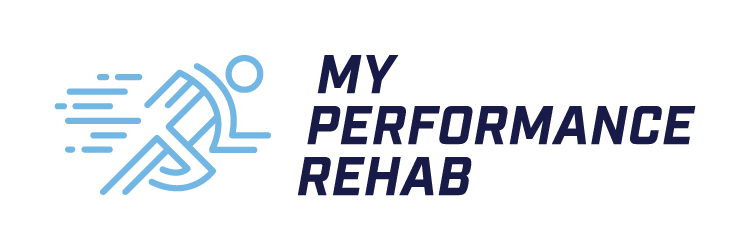
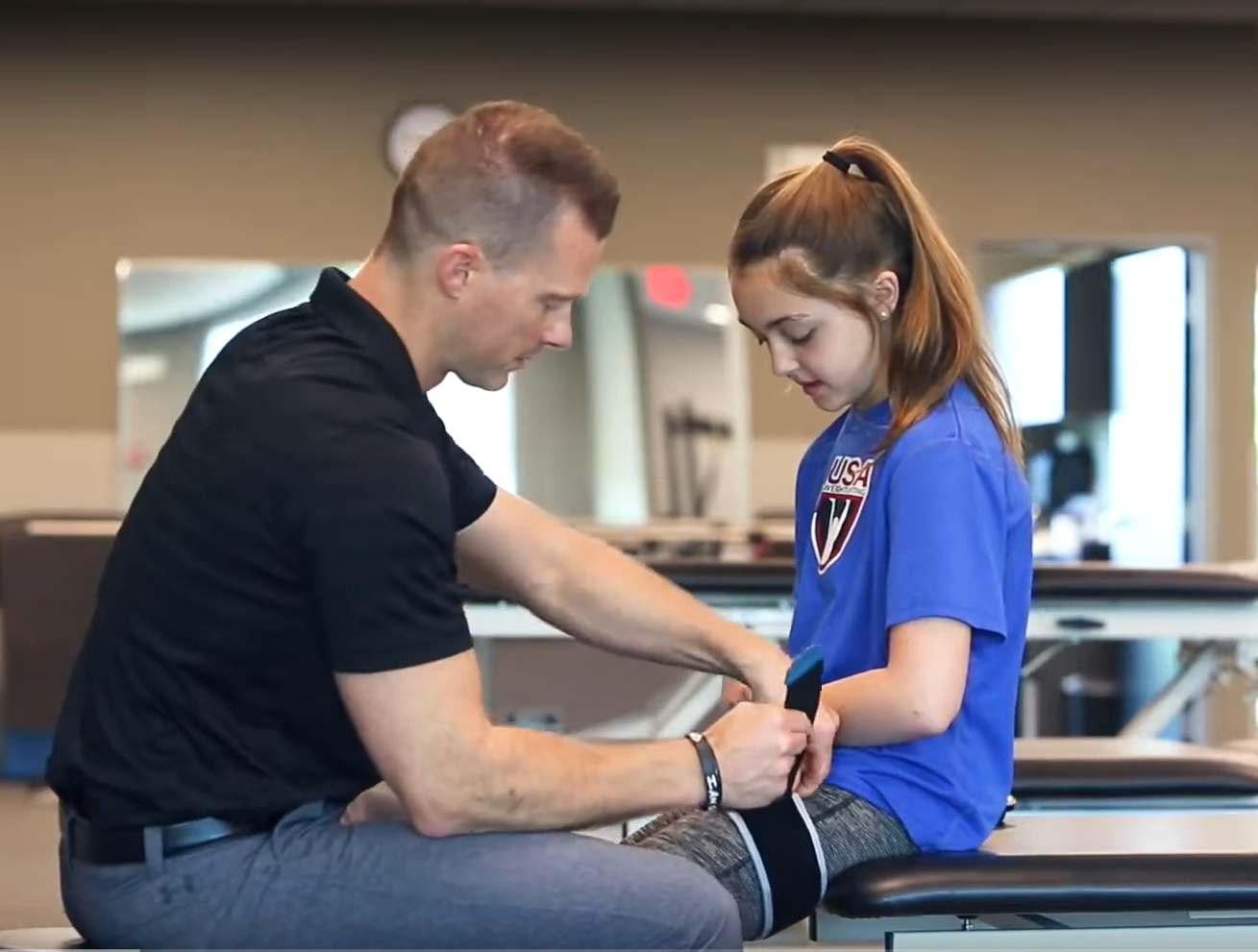
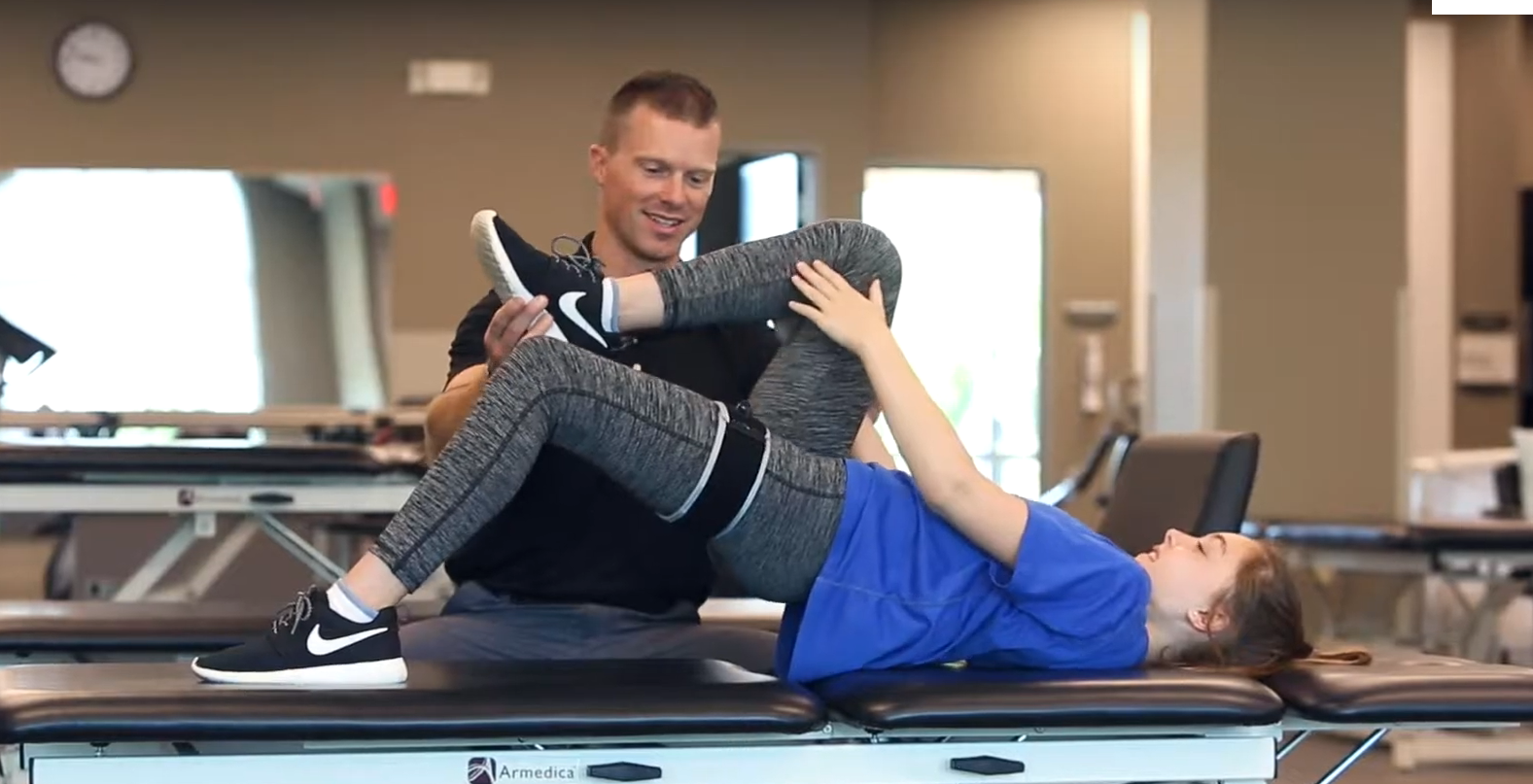

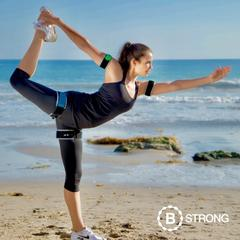



Share:
Blood Flow Restriction Safety
Is BFR Safe?